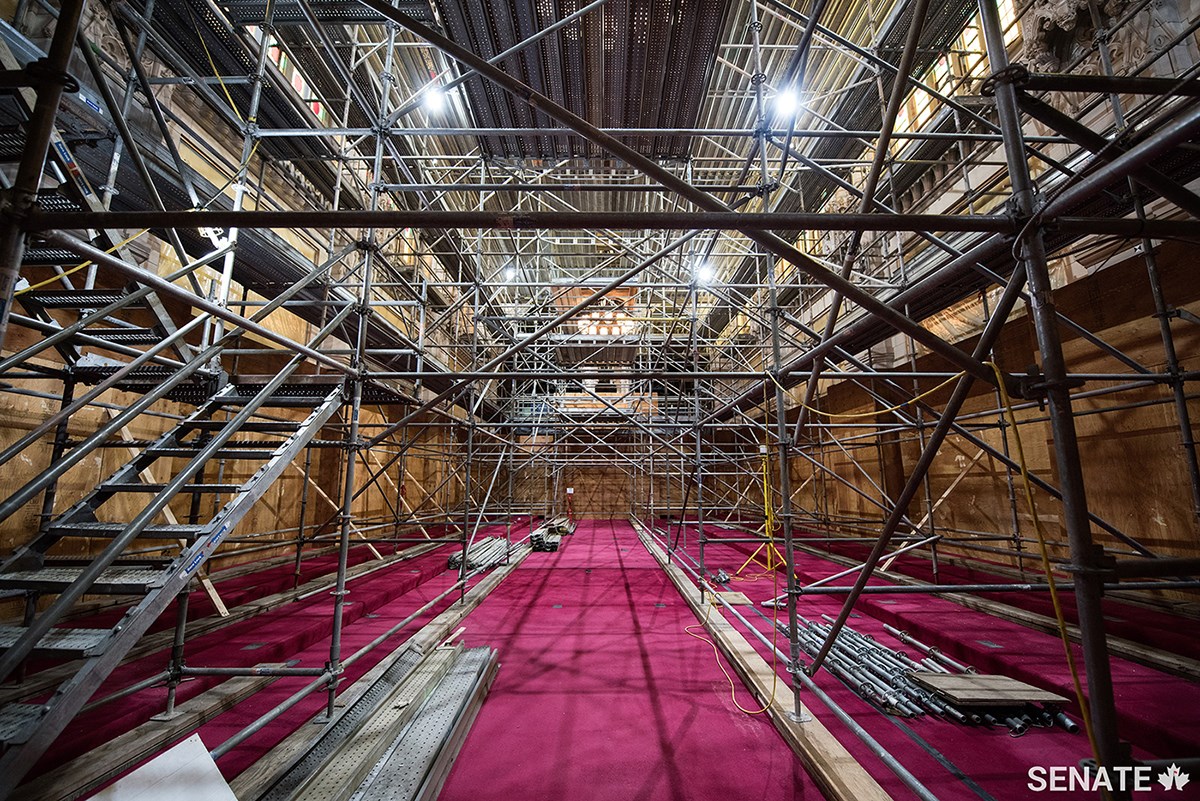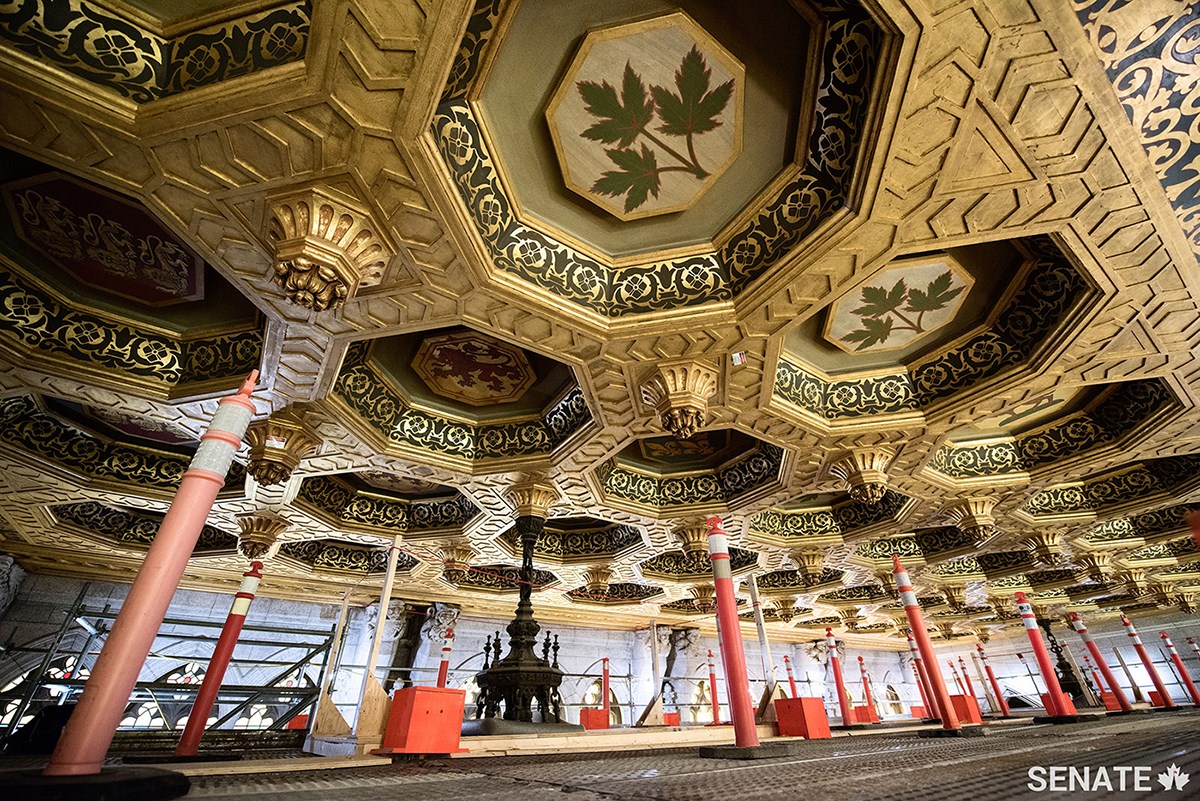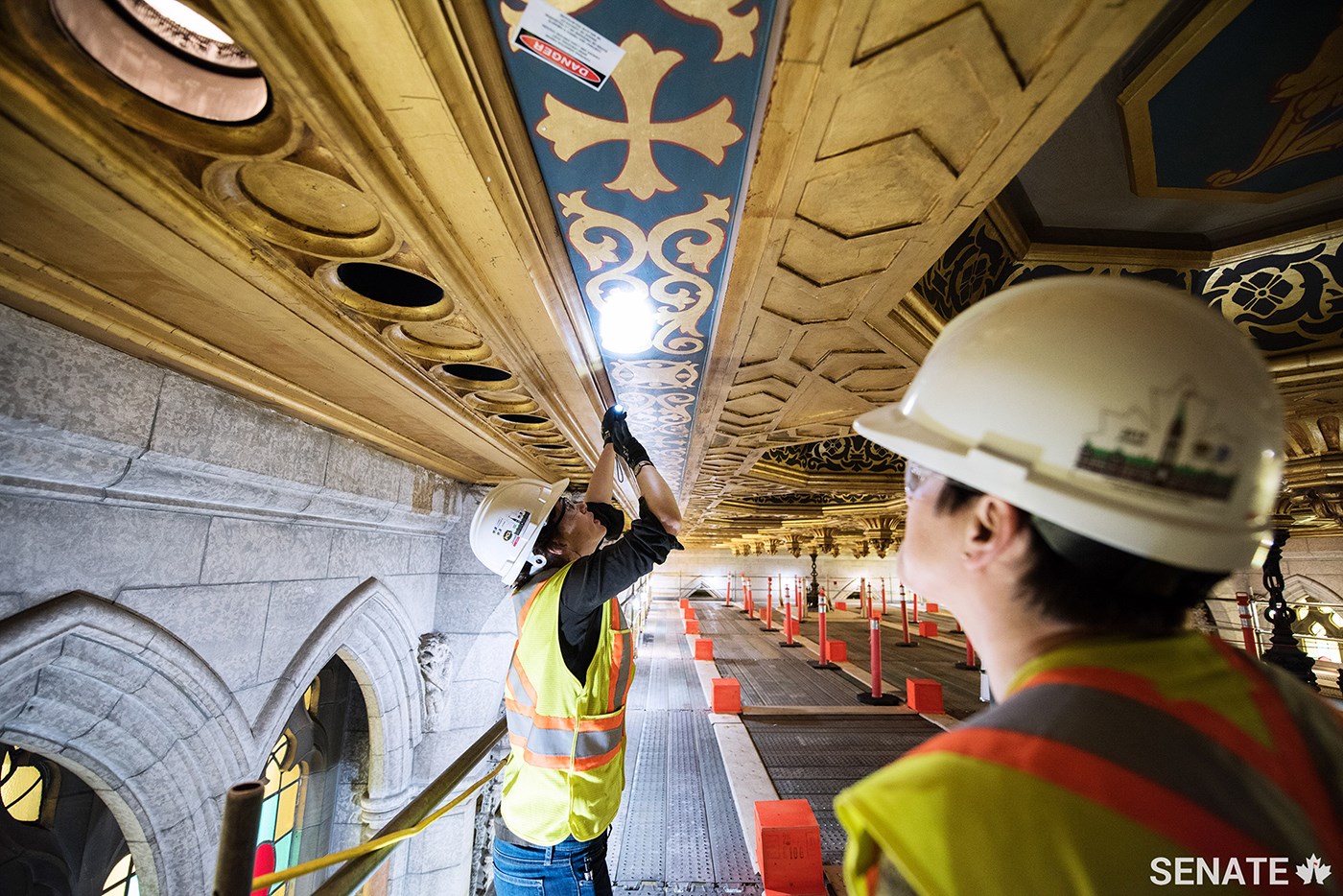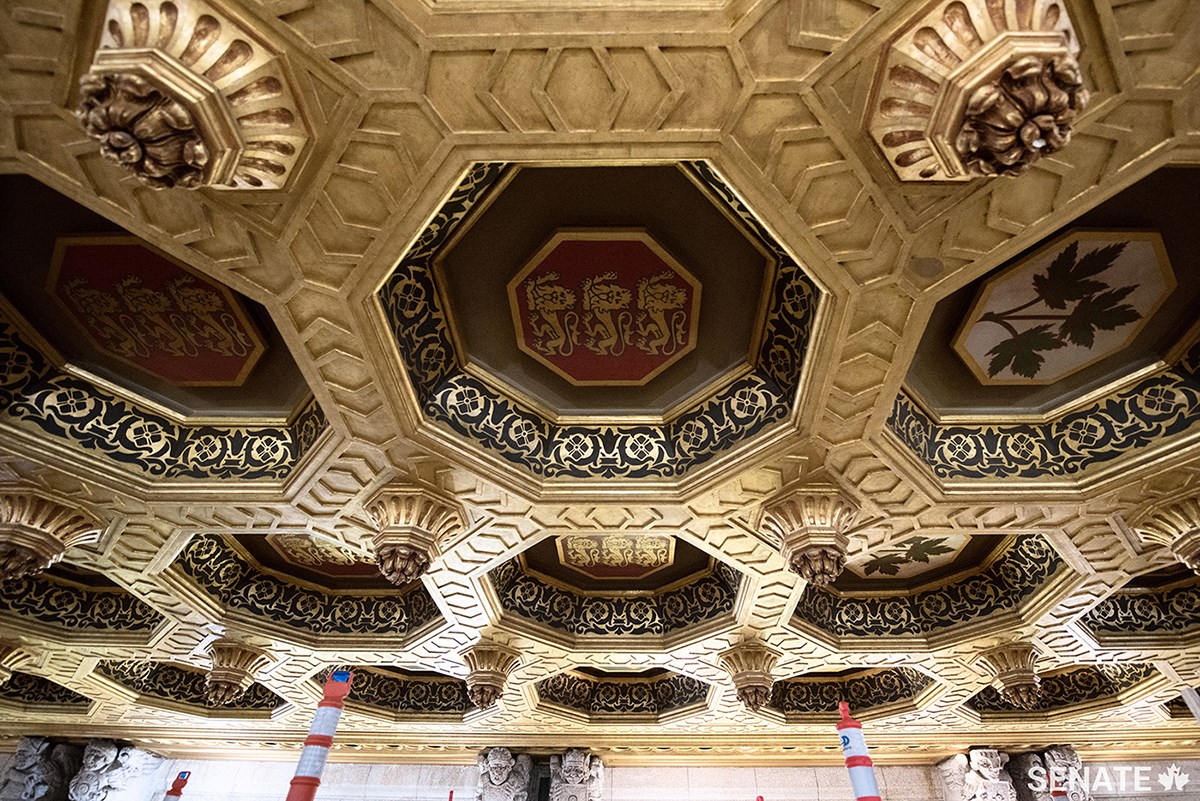Gilded Glory: Revealing the appealing Senate ceiling
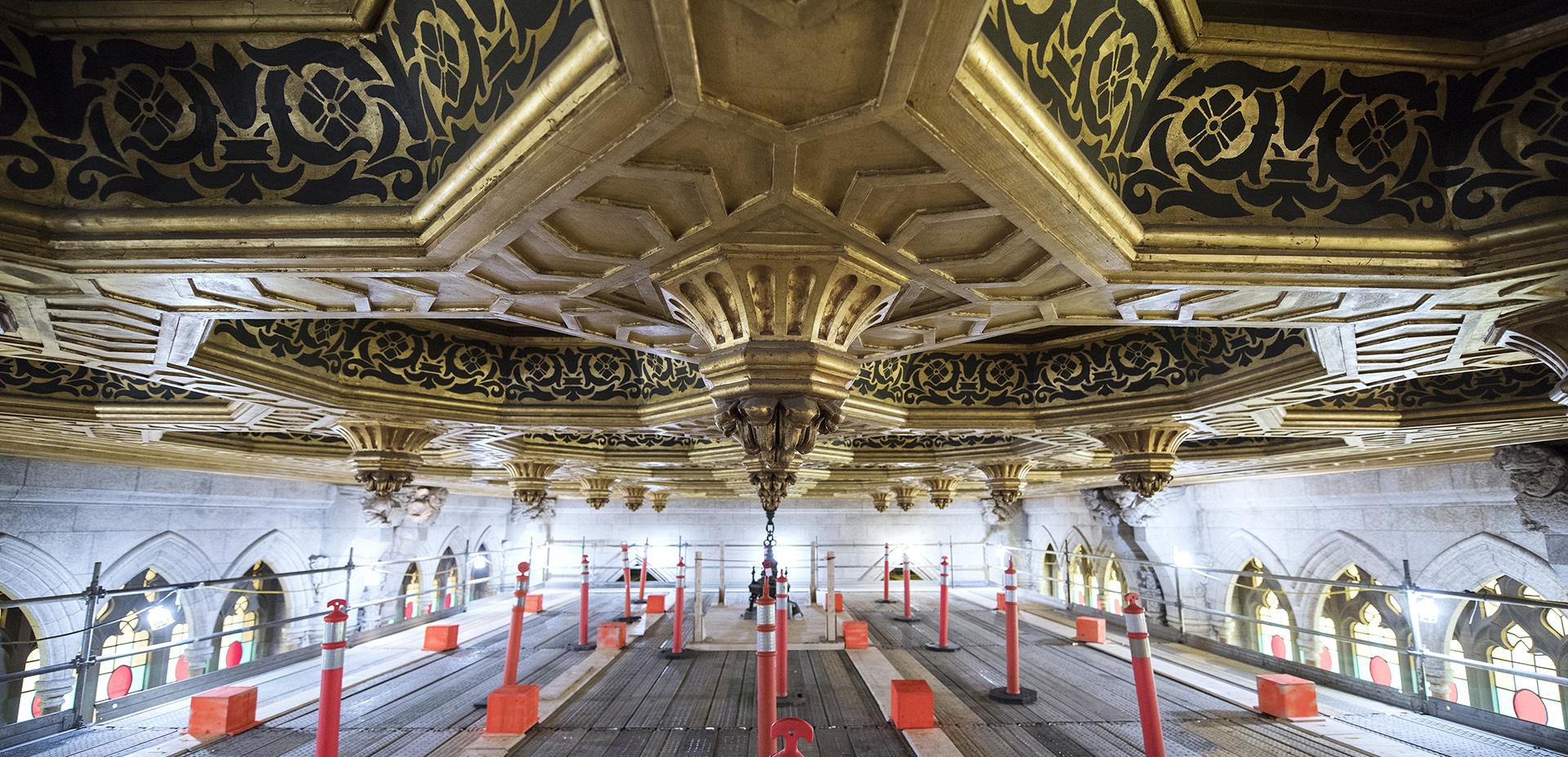
In February 2019, the Senate moved to the Senate of Canada Building, a former train station built in 1912. The Senate will occupy this temporary location while Parliament’s Centre Block — the Senate’s permanent home — is rehabilitated.
Although Centre Block is shuttered for rehabilitation work, Canadians can still experience its art and architecture through the Senate’s immersive virtual tour.
It’s midmorning but the Senate Chamber in Centre Block is bathed in an eerie twilight.
A forest of scaffolding has taken root where senators’ desks once sat; stirring oratory has given way to steel-toe boots clanking on the cold metal canopy high above the dusty red carpet.
Public Services and Procurement Canada heritage lead for the Centre Block Rehabilitation Program Kate Westbury can scarcely contain her excitement as she makes her way to the top of the scaffolding and is greeted by a golden glow.
“The Senate Chamber ceiling is one of my favourites,” she says reverently, her eyes locked on the hand-painted lions, maple leaves and fleurs-de-lis that adorn the ornate, 100-year-old ceiling, which is close enough to touch.
Her demeanour turns businesslike.
“It’ll be nice to see this cleaned.”
*
Ms. Westbury is part of the massive effort to restore and modernize the aging Centre Block. The entire building has been closed for business since late 2018; senators now work from a temporary chamber in Ottawa’s former train station, while MPs moved to West Block.
At this early stage, much of the work taking place is diagnostic. Conservators need to know what they’re dealing with so they can develop an appropriate plan to rehabilitate the ceiling.
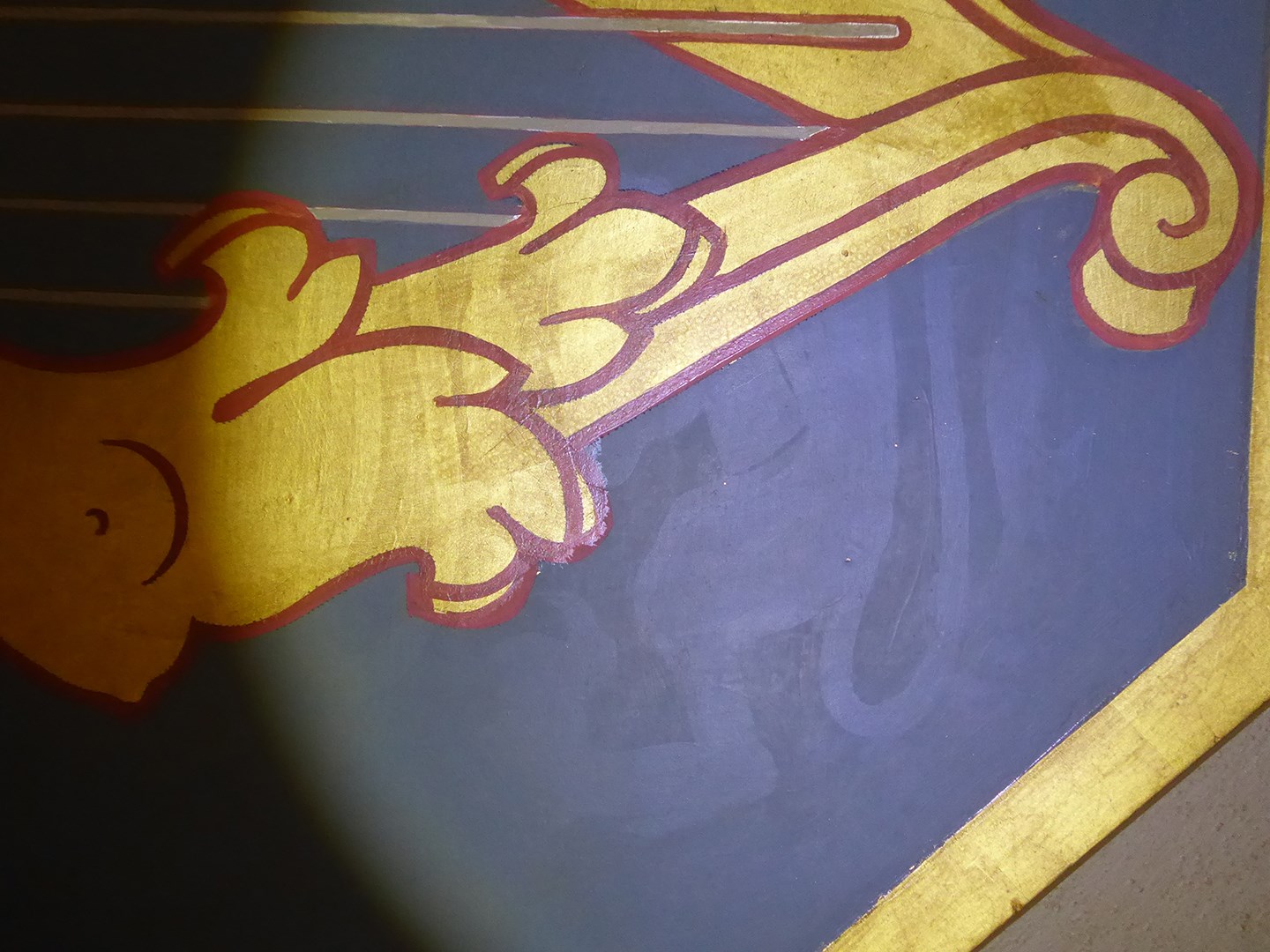
That’s why, on this particular day, Ms. Westbury was accompanied by conservator Caroline Wright — a paint specialist with Hirst Conservation who is helping to assess the state of the Senate ceiling so its beauty can be maintained for future generations.
“You can see the marks where the stencil’s been held,” Ms. Wright said, shining a flashlight on one of the ceiling’s 40 coffers — octagonal indents framing panels depicting Canadian, English, Irish, Scottish, Welsh and French symbols.
One of her first discoveries was the presence of ghost images on some of those panels — images that had been painted over.
“We’ve got two lions here under the existing lions but facing different directions,” she said.
“It looks more like early mock-ups — samples for approvals.”
Working in such proximity to the ceiling grants a newfound appreciation for the labour that would have been involved.
The lion’s share of the ceiling was gilded by hand. It’s a painstaking process in which sheets of gold just a few inches wide and microns thin — “it’s so light, if you breathe it’s gone,” Ms. Wright said — are gently brushed onto prepared plaster.
The gold has cracked in places (conservators call this “crazing”), but it doesn’t detract from the beauty of the ceiling, especially when viewed from the Chamber floor.
The suspended plaster ceiling also shows some small cracks from slight movements it’s made over the decades, but Ms. Wright said these tend to be “incredibly stable.”
“There is every chance that there will be small, ongoing shifts and movement. You need somewhere for it to move,” she said.
It hints at the dilemmas conservators will face. Adding a veneer to protect the paint, for instance, might add too much weight to the ceiling and lead to structural damage.
“If you do nothing, you might lose 20 [small] flakes,” she said. “That’s probably an acceptable risk that can be dealt with.
“There’s a 100% chance of loss here, it’s just that it’s a very, very small loss. Risk is always tricky.”
Ms. Wright and Ms. Westbury have both been reassured by their inspections of the ceiling — unlike other parts of Centre Block it’s in good shape and won’t need much more than a thorough cleaning.
Cleaning isn’t just an aesthetic concern either. Dust attracts moisture, moisture attracts mould.
“Then you get insect damage and then it becomes stickier and you get more dust and then you get more moisture and then you get more dust,” Ms. Wright said.
Before you know it, you’ve got a “crust” that can permanently mar or discolour the surface.
The Senate ceiling has so far escaped this fate — and the teams working diligently on the rehabilitation project will make sure it remains in top condition for generations to come.
